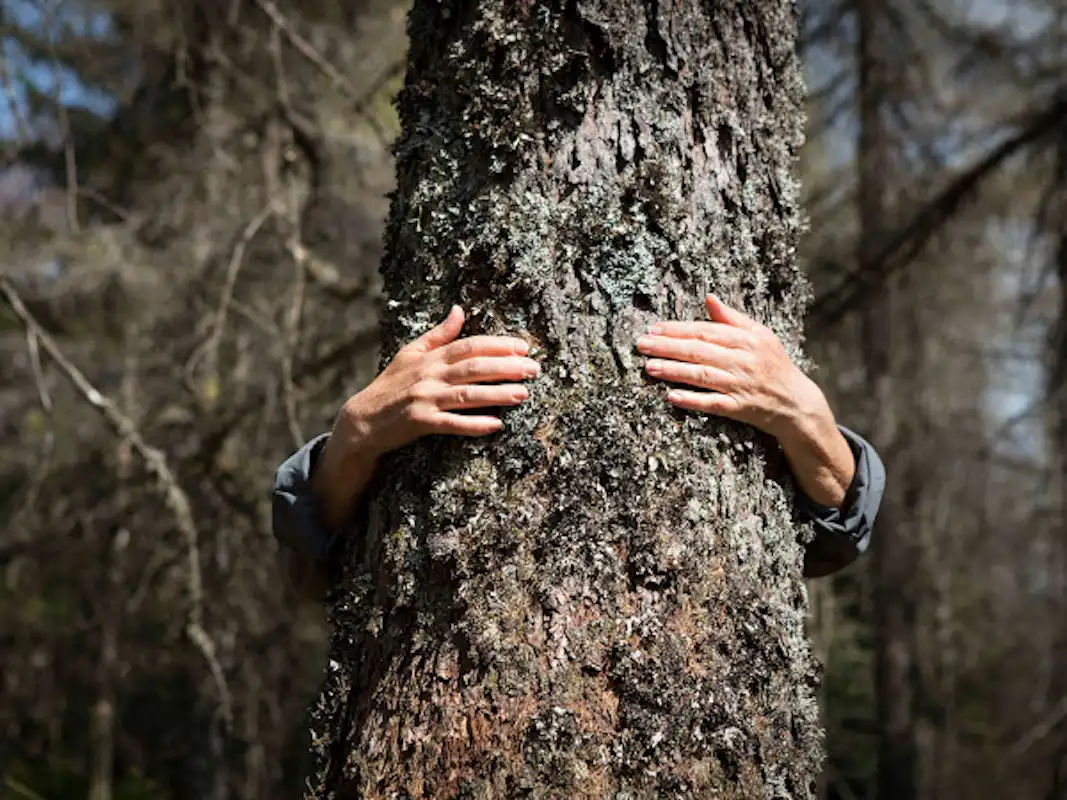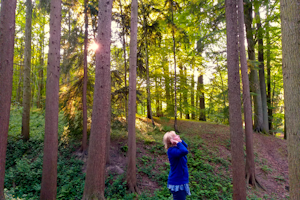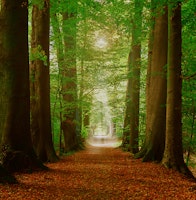There’s a whole lot more to the forest than meets the eye, the smell, for example, of the moist earth when it rains, the crunch of autumn leaves and the chirp of spring birds, the texture of bark, and the taste of berries and mushrooms. Often, when we visit a place like a forest, we can perceive its “goodness”, it’s a pleasant experience, but not always a fully conscious one. That’s where Shinrin Yoku comes in.
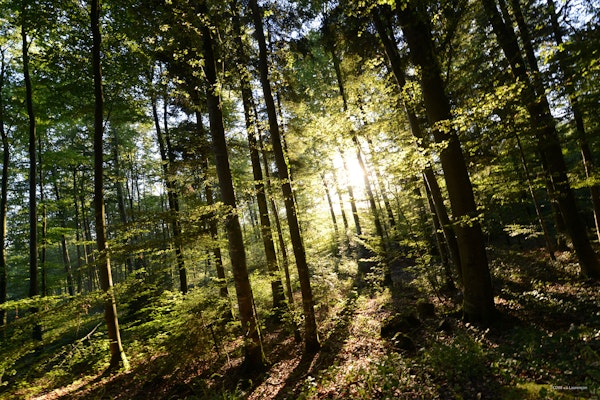
Les Vosges, photo courtesy of Eric B.
Shinrin Yoku, also known as sylvotherapy or forest bathing, is a practice that deepens the experience with nature and makes it full. Awareness is at its core. Certified Nature Guide, Nolwenn, leads forest bathing workshops in Belgium. She collaborated with us to create this outline of what Shinrin Yoku is, the benefits it can bring you, what you need to practice it, and some recommended forests to set out on this unique journey that will take you on a path of nature discovery and of self-discovery too.
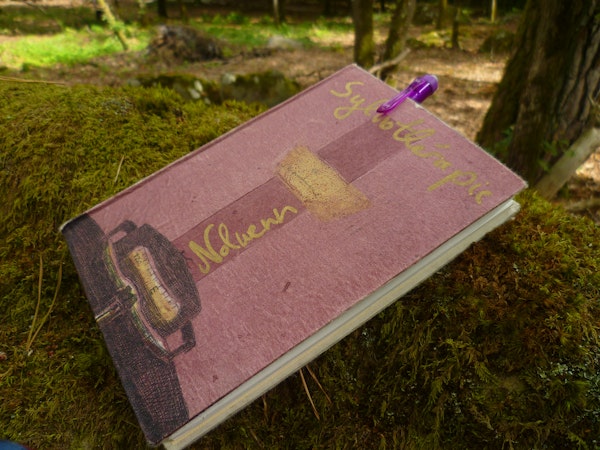
A personal notebook or sketchbook is a great way to keep track of forest bathing sessions. Photo courtesy of Nolwenn L.
What is Shinrin Yoku a.k.a Forest Bathing?
Shinrin Yoku is a Japanese term that translates to Forest Bathing. It is a natural therapy/ meditation-like practice with several steps or invitations that allow you to connect in a unique way with the forest environment, engaging all your senses in a slow-paced, mindful manner.
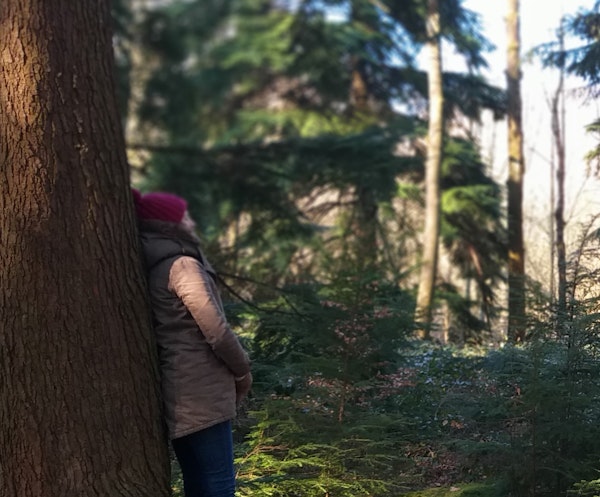
Shinrin Yoku is a unique way to experience nature. Photo courtesy of Nolwenn L.
Of course, forests are beautiful, but you might wonder what makes them especially therapeutic. Apparently, it’s not just a question of spending time in nature in full awareness, although that too, but also the exposure to phytoncides, which plants release, and to beneficial microorganisms, present in the soil and vegetation.
The History of Forest Bathing
Shinrin Yoku stemmed in Japan in the 1980s to deal with two issues. The first was burnout, the country had a public health crisis with high levels of stress and a spike in auto-immune diseases. The other was to revitalize rural areas and increase awareness about the forests in order to protect them.
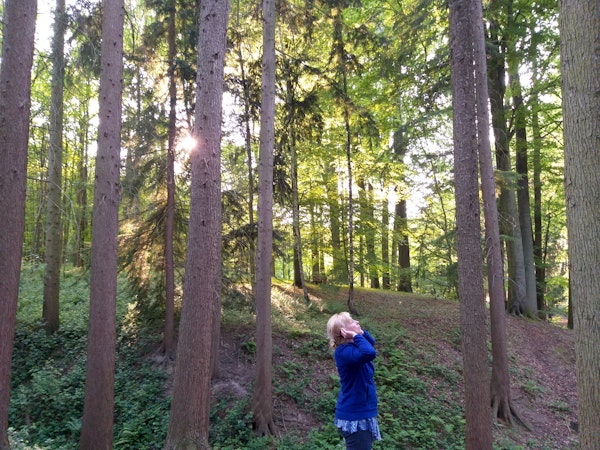
Using all the senses to fully engage with the forest on a sylvotherapy session. Photo courtesy of Nolwenn L.
Research on the subject of forest bathing began in 1988 when Prof. Yoshifumi Miyazaki was hired by Japan’s Forestry and Forest Products Research Institute (FFPRI). He started experiments on the island of Yakushima where he studied the effects of cedars on stress hormones. It was only the beginning. The practice in the country expanded, as well as the research, and then it went global.
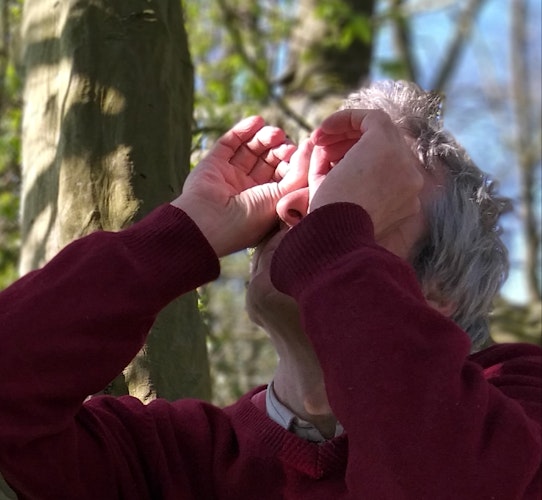
Shinrin yoku workshop in Belgium, led by guide, Nolwenn L.
Many of the techniques are based on Shinto and Buddhist practices. Today, Japan boasts over 60 official forest bathing trails, and this highly beneficial practice is popular worldwide, with plenty of guides to show the way.
Forest Bathing vs. Hiking
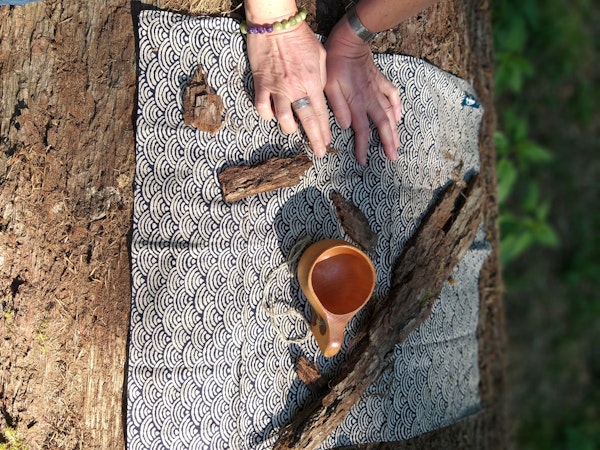
Forest bathing is framed in a ceremonial setting. Photo courtesy of Nolwenn L.
Although hiking is certainly beneficial for many reasons, and although forest bathing involves walking in the woods, they are not the same. Forest bathing is partially aimed at reducing stress, so in fact, exertion, which puts physical stress on the body, is not recommended for this practice. Using the five senses mindfully is, and whereas on a hike you might sit down under a tree to rest, on a forest bathing experience, you will sit down to pay attention to your surroundings and self. The focus and the intensity are different.
There is also a ceremonial aspect to forest bathing. Each stage of the experience is preceded by an invitation, and observations are then shared with the group.
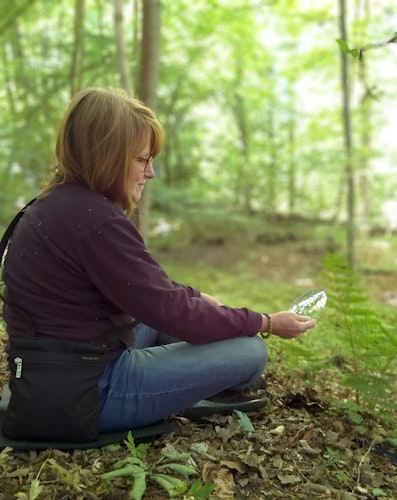
Forest Bathing combines physiological and psychological practices. Photo courtesy of Nolwenn L.
Why go forest bathing with a guide?
Going with a guide in a group enhances the forest bathing experience as it is easier to access a place of awareness in a guided setting. The guide will propose different exercises in the form of invitations, which ritualizes the experience and creates a shift in focus. A group setting will give you the chance to share observations and reflections once the exercises are completed.
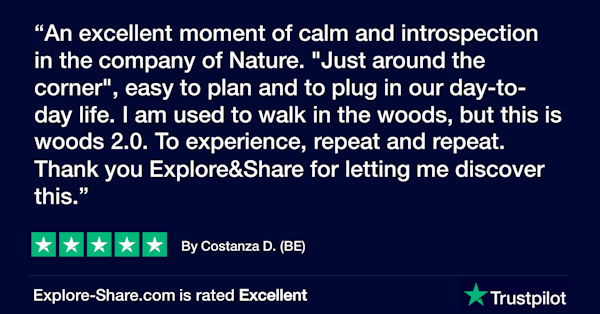
What are the Benefits of Forest Bathing?
In terms of mental health, forest bathing has proven to be effective to reduce stress, anxiety, and depression. The parasympathetic nervous system is stimulated, and this improves rest and slows down the heart rate while increasing intestinal and gland activity. Forest bathing also improves autonomic and immune functions. It has been used as a natural therapy to treat high blood pressure, diabetes, and other chronic diseases. Health benefits aside, forest bathing is also a very pleasant way of interacting with nature, and, a great group activity to share with loved ones.
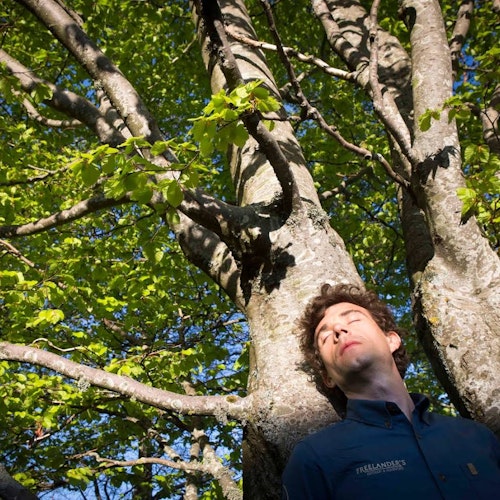
Engaging deeply with the forest using all the senses bring a wide variety of health benefits. Photo courtesy of Eric B.
What should I bring to a forest bathing session?
You don’t really need much to attend a forest bathing session. Adequate clothing depending on the weather, and comfortable shoes to walk in. You can also bring a snack, something cold or warm to drink, a comfortable mat to sit on, a sketchbook, and any other comforting element that can enhance your experience.
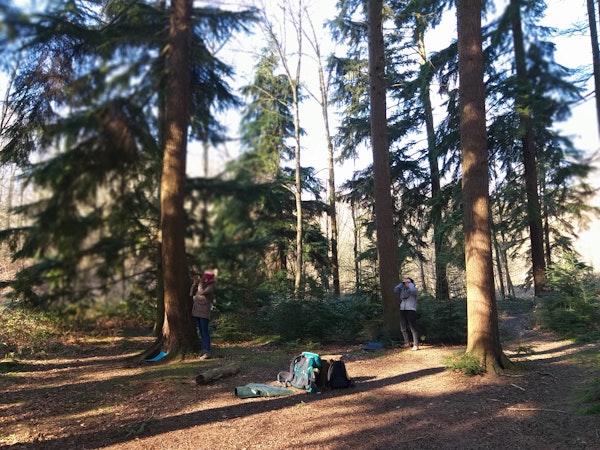
Bring comfortable clothes and shoes, as well as accessories to make the best of your experience. Photo courtesy of Nolwenn L.
What is the best time to go Forest Bathing?
As the Scandinavians like to point out, there is no such thing as bad weather, only inadequate clothing, and in forest bathing, this rule applies. There is no ideal time for this activity in that the forest offers something unique to observe and discover every season. In fact, if you try forest bathing once, you might want to try it again in a different season and discover something new or unexpected, the second, third, or fourth time around.
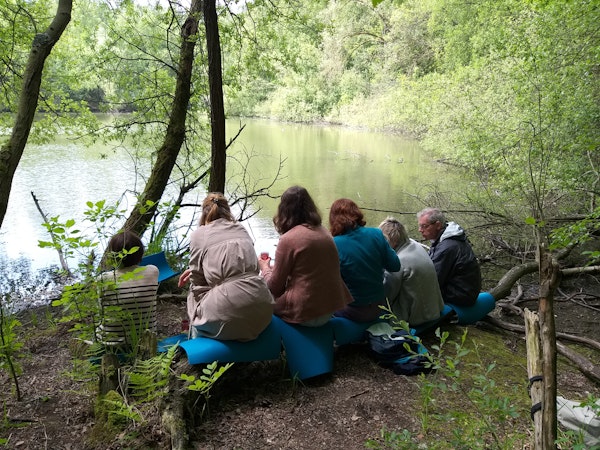
Sharing observations during a forest bathing session. Photo courtesy of Nolwenn L.
Best Places to Practice Forest Bathing
No one forest is better than another to practice forest bathing, so starting in a forest near you is the first best place. That said, although this activity is becoming increasingly popular, not every forest has a specialized guide to show you the way. Below, we share some ideas in a list we hope will grow over time.
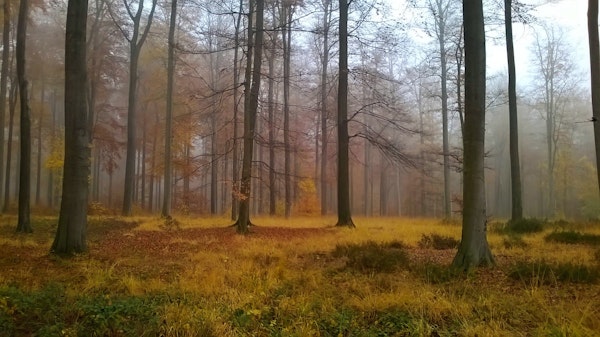
The beautiful Forêt de Soignes, in Belgium. Photo courtesy of Nolwenn L.
Japan: The birthplace of Shinrin Yoku is, of course, a unique place to experience this practice and if you go to Yakushima, you can also visit Jomon Sugi, the oldest Japanese cypress on the island, and one of the oldest in the world. Shiratani Unsuikyo is another famous ancient cedar forest there.
Amazon Rainforest: Forest bathing trips are sometimes arranged to this unique and wonderful rainforest in South America. You can also take advantage of your time there to explore the local traditions and enjoy the vibrant flora and fauna or climb Samaúma, the Amazon’s tallest tree.
In Europe, we have forest bathing programs in Les Vosges, Queyras, the Forêt de Soignes in Belgium, and near Barcelona.
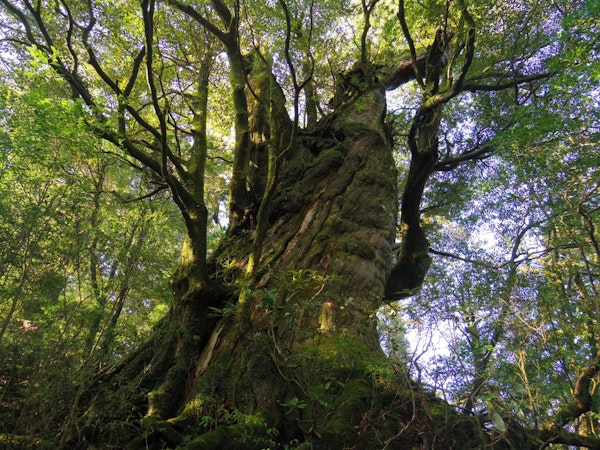
The ancient cedar forests of Japan.
Wherever you decide to try a shinrin yoku immersion, we’re sure you will reap many benefits. We invite you to try this invigorating practice and incorporate it to your nature travels!
